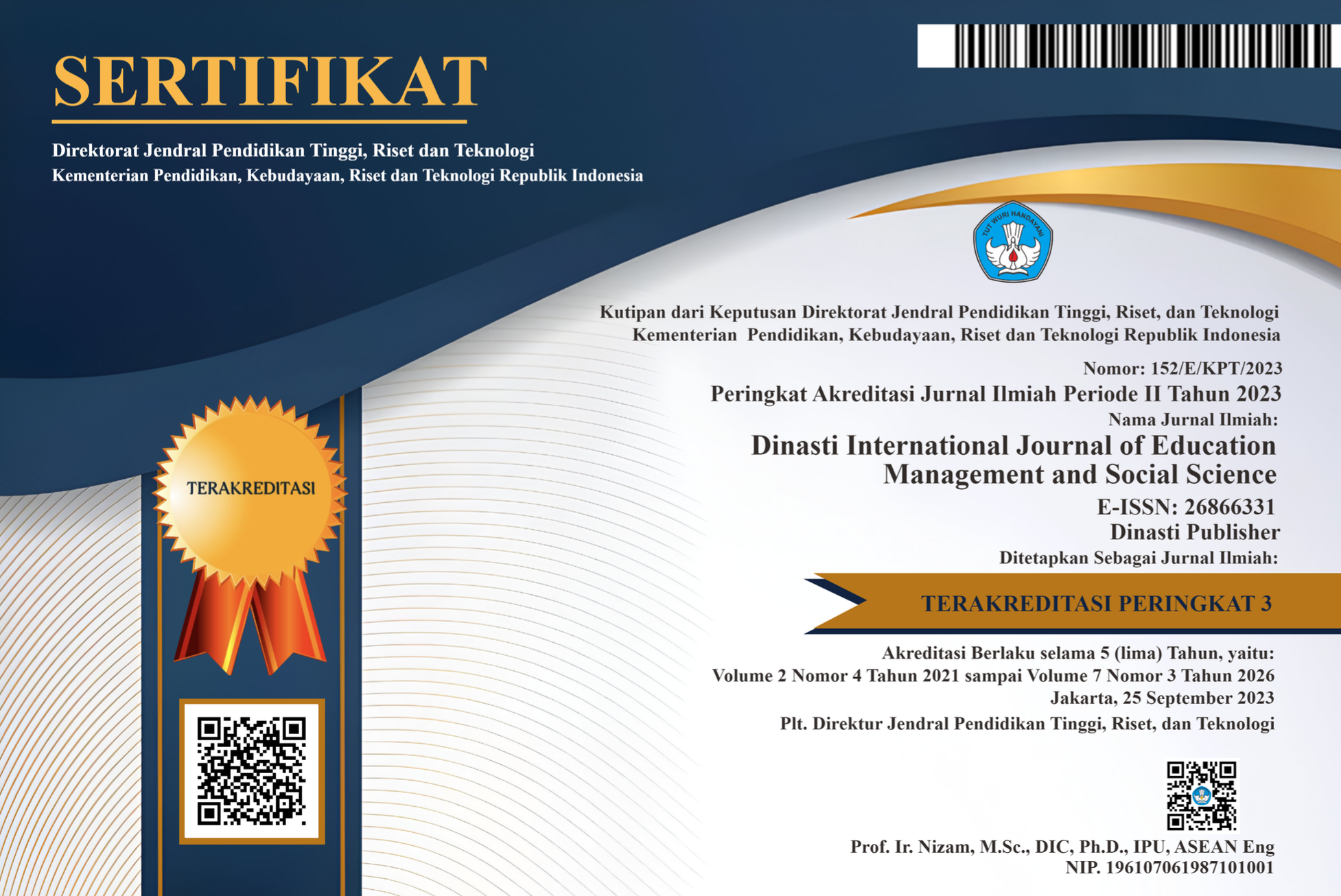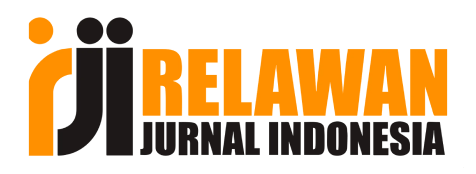The Challenges of English Native Speaker in Teaching English in A Junior High School Manokwari West Papua
DOI:
https://doi.org/10.38035/dijemss.v6i4.4497Keywords:
Challenges, English Native Speaker, Teaching English, Education, Manokwari West PapuaAbstract
Teaching English requires effective strategies for students to improve their language skills. English Native Speakers play an important role in the learning process as they provide a more authentic language experience. However, English Native Speakers also face various challenges, especially when teaching in one of the junior high schools in Manokwari, West Papua. This study aims to identify the challenges English Native Speakers face in teaching English in that school. Using a descriptive qualitative approach, data were collected through interviews and classroom observations. The results showed that English Native Speakers experience challenges in dealing with differences in students' ability levels, cultural gaps, and adaptation to the local education system. In addition, large class sizes and limited opportunities for students to practice English outside the classroom are also barriers to learning. By understanding these challenges, it is hoped that teaching strategies can be improved and recommendations made for more effective English language teaching in Manokwari.
References
Abdul Samad Roshan, Mushfiqe, Muhammad Qasim Gurbaz, & Saifurrahman Rahmani. (2022). The Effects of Large Classes on English Language Teaching. Integrated Journal for Research in Arts and Humanities, 2(2), 38–41. https://doi.org/10.55544/ijrah.2.2.20
Akter Shanta, S. (2014). Reality of EFL Classes: With Students of Varied Proficiency Levels. ASA University Review, 8(2).
Albaiz, T. (2017). The Voice of Classroom Achievement towards Native and Non-native Educators in English Language Teaching: An Evaluative Study. 111–124. https://doi.org/10.1007/978-3-319-43234-2_6
Ariyanda, T., & Arifyani, D. (2020). Special Autonomy Law and Education Attainment in West Papua: A Quasi-Experiment Analysis. Jambura Equilibrium Journal, 2(2), 95–108. https://doi.org/10.37479/jej.v2i2.6930
Cao, Y. (2023). The Application of Communicative Language Teaching: Method in Middle School English Classroom Teaching. Journal of Humanities, Arts and Social Science, 7(6), 1189–1192. https://doi.org/10.26855/jhass.2023.06.028
Dang, S. (2024). Empowering Students Through Inclusive Language Teaching Practices. Lloyd Business Review, III(2), 1–8. https://doi.org/10.56595/lbr.v3i2.34
Erlina, D., Marzulina, L., Harto, K., Holandyah, M., Wulandari, B. A., Fauzan, M., Fridiyanto, F., & Mukminin, A. (2022). English Education and Large Classes: Unpacking the Challenges and Coping Strategies. Theory and Practice in Language Studies, 12(3), 489–497. https://doi.org/10.17507/tpls.1203.08
Felder, R. M., & Henriques, E. R. (1995). Learning and Teaching Styles In Foreign and Second Language Education. Foreign Language Annals, 28(1), 21–31. https://doi.org/10.1111/j.1944-9720.1995.tb00767.x
Harlina, H., & Yusuf, F. N. (2020). Tantangan Belajar Bahasa Inggris di Sekolah Pedesaan. Jurnal Penelitian Pendidikan, 20(3), 325–334. https://doi.org/10.17509/jpp.v20i3.28191
Harmer, J. (1987). Learning the Language of Practice. In Curriculum Inquiry (Vol. 17, Issue 3, pp. 293–318). https://doi.org/10.1080/03626784.1987.11075294
Hasanah, N., & Utami, P. T. (2020). Emerging Challenges of Teaching English in Non-native English-Speaking Countries: Teachers’ View. English Language Teaching Educational Journal, 2(3), 112. https://doi.org/10.12928/eltej.v2i3.1134
Kannan, Baskaran and Shanmugavelu, G. (2020). STUDENTS’ LEARNING STYLES IN THE CLASSROOM AND IT’S IMPORTANCE TO EDUCATORS IN THE TEACHING AND LEARNING PROCESS: AN OVERVIEW. EPRA International Journal of Multidisciplinary Research (IJMR)-Peer Reviewed Journal, 2, 198–210. https://doi.org/10.36713/epra2013
Khairina, N., & Wijaya, A. (2023). The Determinant of Human Development in Eastern Part of Indonesia during 2012-2020. Signifikan: Jurnal Ilmu Ekonomi, 12(1), 83–96. https://doi.org/10.15408/sjie.v12i1.29496
Kusumaryati, V. (2019). Dreams Made Small: The Education of Papuan Highlanders in Indonesia. The Asia Pacific Journal of Anthropology, 20(1), 100–102. https://doi.org/10.1080/14442213.2018.1547289
Matatula, Marles Y, Tupalessy, P. (2024). Exploring Learning Desire: Students’ Intrinsic Motivation in English Language Mastery.
Mollet, J. A. (2007). Educational investment in conflict areas of Indonesia: The case of West Papua Province. International Education Journal, 8(2), 155–166.
Munro, J. (2018). Dreams Made Small The Education of Papuan Highlanders in Indonesia (p. 216). https://doi.org/10.3167/9781785336843
Neupane, R. N. (2015). Overcoming Fundamental Challenges in ELT Classroom. Journal of NELTA Surkhet, 4, 105–108. https://doi.org/10.3126/jns.v4i0.12868
Nugraha, R. A., & Bajari, A. H. (2022). Strategies for Increasing Access and Quality of Education at the Elementary School Levels in Papua and West Papua Province. International Academic Journal of Education and Literature, 3(02), 56–59. https://doi.org/10.47310/iajel.2022.v03i02.006
Rahman, Arif, Wayan, N., Wahyudiantari, P., & Sugianto, R. (2024). DEVELOPING A CULTURALLY RESPONSIVE READING MODULE FOR FIRST-GRADE ISLAMIC JUNIOR HIGH SCHOOL STUDENTS. 12(4), 1885–1898.
Sabir, A. T. (2024). Teacher ’ s Perceptions on Large-Size Class Effect?: the Case of Koya City Elementary Schools. 60, 45–62.
Sudaryono. (2016). Metode Penelitian Pendidikan (pertama). kencana.
Uswanas, M., Keban, Y. T., Hadna, A. H., & Kutanegara, P. M. (2019). Kinerja Pendidikan Dasar Setelah Sembilan Tahun Otonomi Asimetris di Provinsi Papua Barat. Populasi, 26(2), 61. https://doi.org/10.22146/jp.44150
Wiraguna, S., Purwanto, L. M. F., & Rianto Widjaja, R. (2024). Metode Penelitian Kualitatif di Era Transformasi Digital Qualitative Research Methods in the Era of Digital Transformation. Arsitekta?: Jurnal Arsitektur Dan Kota Berkelanjutan, 6(01), 46–60. https://doi.org/10.47970/arsitekta.v6i01.524
Zaini, N. H. M. (2019). A study on students’ attitude and motivation in learning English as a second language. Journal of English Teaching and Research, 2(October), 207–220. https://ir.uitm.edu.my/14672/
Zhao, L. (2015). The Influence of Learners’ Motivation and Attitudes on Second Language Teaching?. Theory and Practice in Language Studies, 5(11), 2333. https://doi.org/10.17507/tpls.0511.18
Downloads
Published
How to Cite
Issue
Section
License
Copyright (c) 2025 Winda Sri Handayani, Koesoemo Ratih, Muamaroh Muamaroh

This work is licensed under a Creative Commons Attribution 4.0 International License.
Authors who publish their manuscripts in this journal agree to the following conditions:
- The copyright on each article belongs to the author(s).
- The author acknowledges that the Dinasti International Journal of Education Management and Social Science (DIJEMSS) has the right to be the first to publish with a Creative Commons Attribution 4.0 International license (Attribution 4.0 International (CC BY 4.0).
- Authors can submit articles separately, arrange for the non-exclusive distribution of manuscripts that have been published in this journal into other versions (e.g., sent to the author's institutional repository, publication into books, etc.), by acknowledging that the manuscript has been published for the first time in the Dinasti International Journal of Education Management and Social Science (DIJEMSS).















































